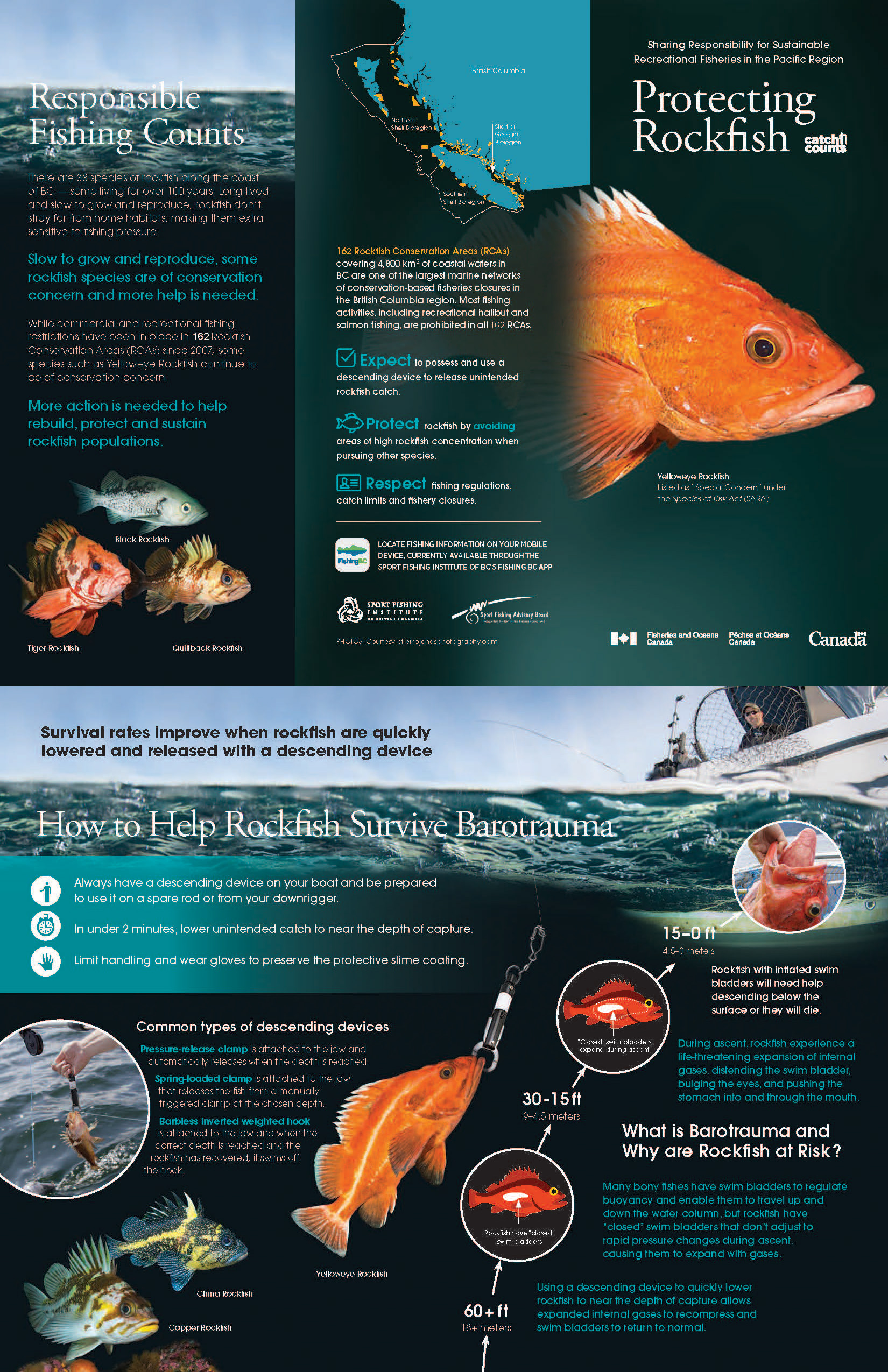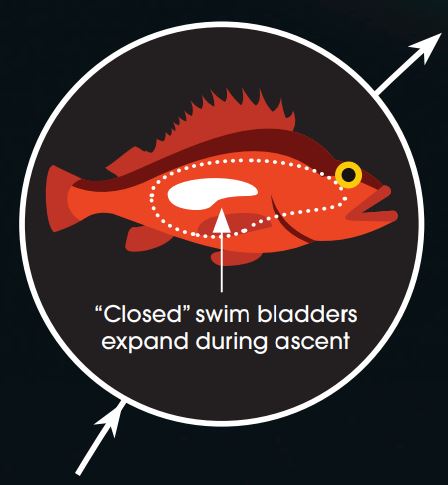Protecting rockfish

Description: Protecting rockfish
Sharing responsibility for sustainable recreational fisheries in the Pacific Region
Responsible fishing counts
There are 38 species of rockfish along the coast of BC — some living for over 100 years! Long-lived and slow to grow and reproduce, rockfish don’t stray far from home habitats, making them extra sensitive to fishing pressure.
Slow to grow and reproduce, some rockfish species are of conservation concern and more help is needed.
While commercial and recreational fishing restrictions have been in place in 162 Rockfish Conservation Areas (RCAs) since 2007, some species such as Yelloweye Rockfish continue to be of conservation concern.
More action is needed to help rebuild, protect and sustain rockfish populations.
- Expect to possess and use a descending device to release unintended rockfish catch
- Protect rockfish by avoiding areas of high rockfish concentration when pursuing other species
- Respect fishing regulations, catch limits and fishery closures
What is barotrauma and why are rockfish at risk
Many bony fishes have swim bladders to regulate buoyancy and enable them to travel up and down the water column, but rockfish have “closed” swim bladders that don’t adjust to rapid pressure changes during ascent, causing them to expand with gases
| Depth | About |
|---|---|

15 to 0 feet
|
Rockfish with inflated swim bladders will need help descending below the surface or they will die. |

30 to 15 feet
|
During ascent, rockfish experience a life-threatening expansion of internal gases, distending the swim bladder, bulging the eyes, and pushing the stomach into and through the mouth. |

60+ feet
|
Using a descending device to quickly lower rockfish to near the depth of capture allows expanded internal gases to recompress and swim bladders to return to normal. |
How to help rockfish survive barotrauma
Survival rates improve when rockfish are quickly lowered and released with a descending device
- Always have a descending device on your boat and be prepared to use it on a spare rod or from your downrigger
- In under 2 minutes, lower unintended catch to near the depth of capture
- Limit handling and wear gloves to preserve the protective slime coating
Common types of descending devices
- Pressure-release clamp is attached to the jaw and automatically releases when the depth is reached.
- Spring-loaded clamp is attached to the jaw that releases the fish from a manually triggered clamp at the chosen depth.
- Barbless inverted weighted hook is attached to the jaw and when the correct depth is reached and the rockfish has recovered, it swims off the hook.
Rockfish Conservation Areas
162 Rockfish Conservation Areas (RCAs) covering 4,800 km of coastal waters in BC are one of the largest marine networks of conservation-based fisheries closures in the British Columbia region. Most fishing activities, including recreational halibut and salmon fishing, are prohibited in all 162 RCAs.
- Date modified: